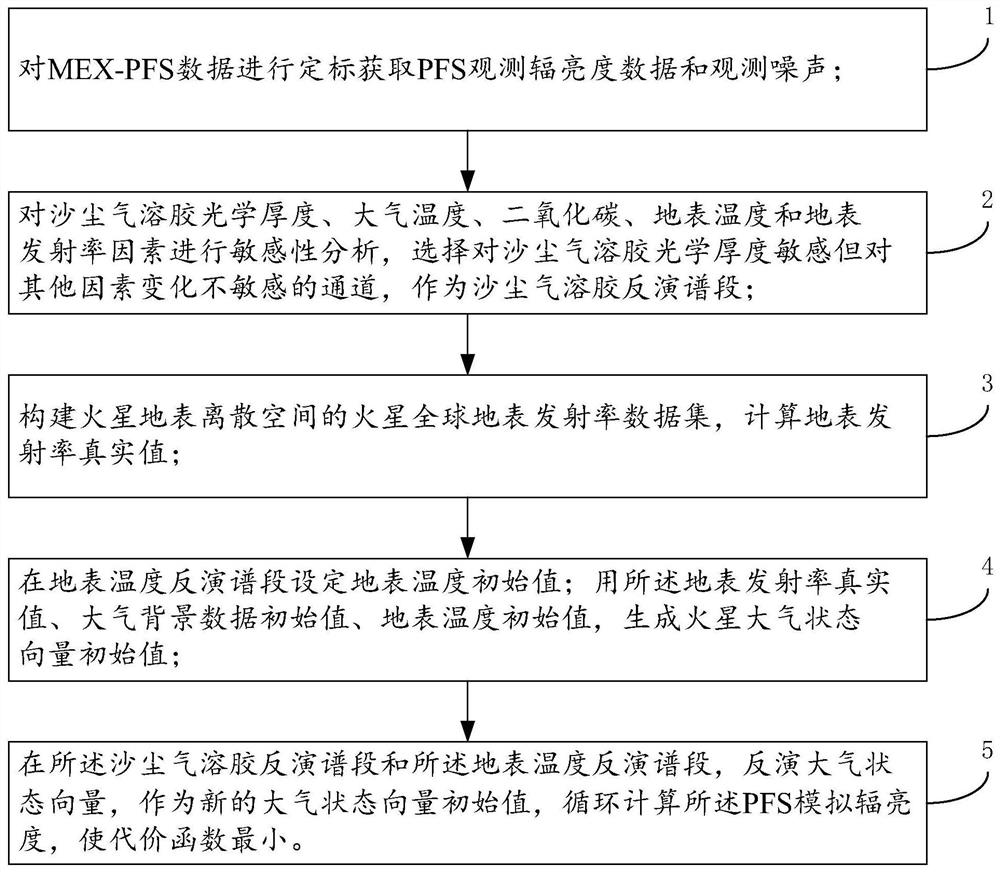A Retrieval Method of Optical Depth of Martian Atmospheric Dust Aerosol
An optical depth and aerosol technology, which is applied in the field of satellite remote sensing atmospheric composition inversion, can solve the problems of huge calculation amount, atmospheric inversion error, unusability, etc., and achieves the effect of reducing calculation amount and improving calculation efficiency.
- Summary
- Abstract
- Description
- Claims
- Application Information
AI Technical Summary
Problems solved by technology
Method used
Image
Examples
Embodiment Construction
[0030] The present invention will be described more fully below in conjunction with the accompanying drawings, and exemplary embodiments of the present invention are shown. This invention may, however, be embodied in many different forms and should not be construed as limited to the exemplary embodiments set forth herein. Rather, these embodiments are provided so that this disclosure will be thorough and complete, and will fully convey the scope of the invention to those skilled in the art.
[0031] The satellite data in the present invention selects the MEX-PFS data of the European Space Agency (only the original data are released at present). MEX is currently the longest Mars exploration satellite in orbit. PFS is a double pendulum Michelson interferometer, providing 200-8200cm -1 The data in the spectral range is divided into short-wave and long-wave channels, and the spectral sampling is 1cm -1 , with an effective resolution of 2cm -1 . Short wave channel spectrum ran...
PUM
 Login to View More
Login to View More Abstract
Description
Claims
Application Information
 Login to View More
Login to View More - R&D
- Intellectual Property
- Life Sciences
- Materials
- Tech Scout
- Unparalleled Data Quality
- Higher Quality Content
- 60% Fewer Hallucinations
Browse by: Latest US Patents, China's latest patents, Technical Efficacy Thesaurus, Application Domain, Technology Topic, Popular Technical Reports.
© 2025 PatSnap. All rights reserved.Legal|Privacy policy|Modern Slavery Act Transparency Statement|Sitemap|About US| Contact US: help@patsnap.com



